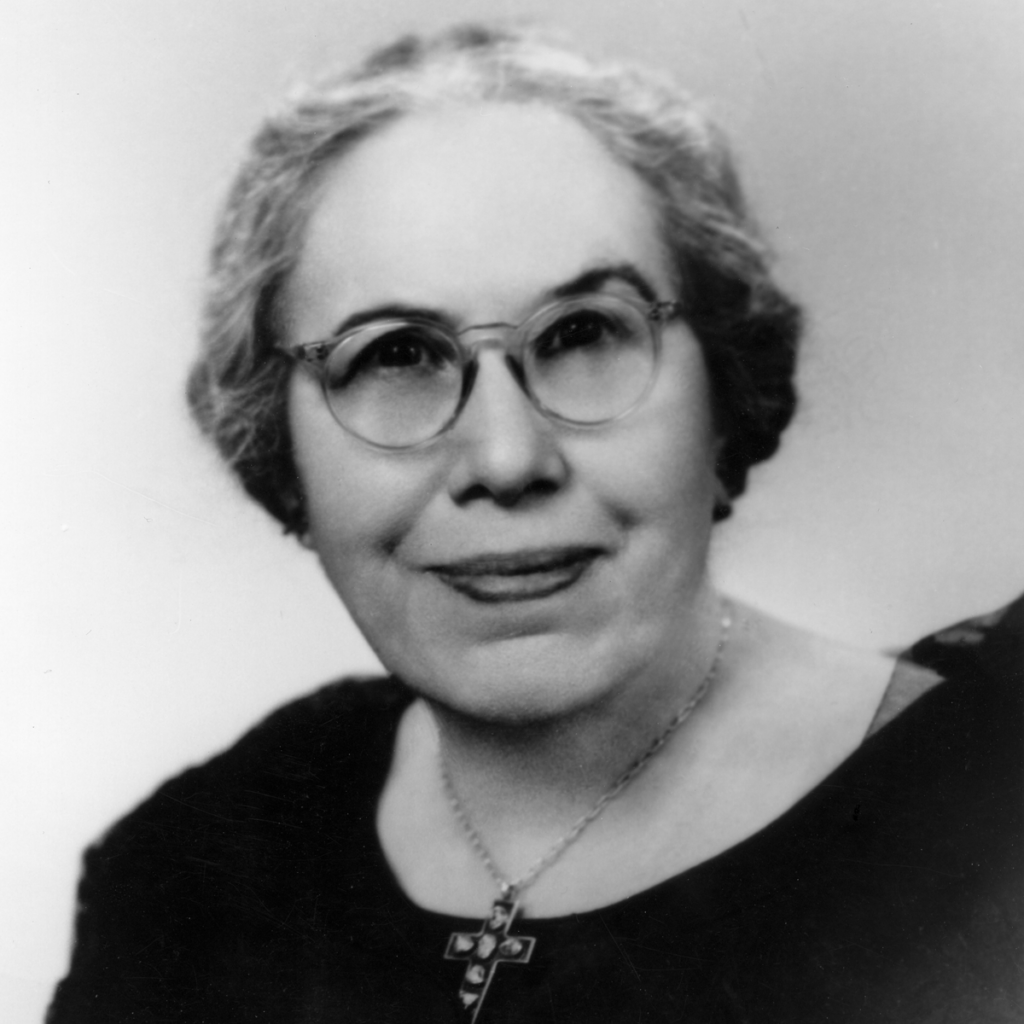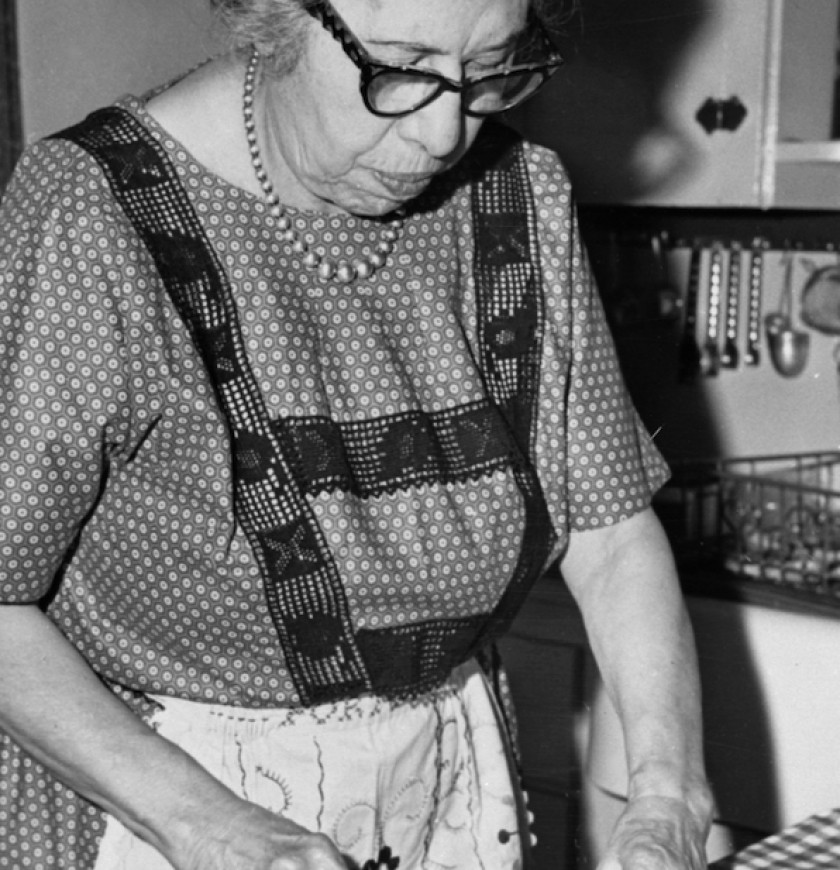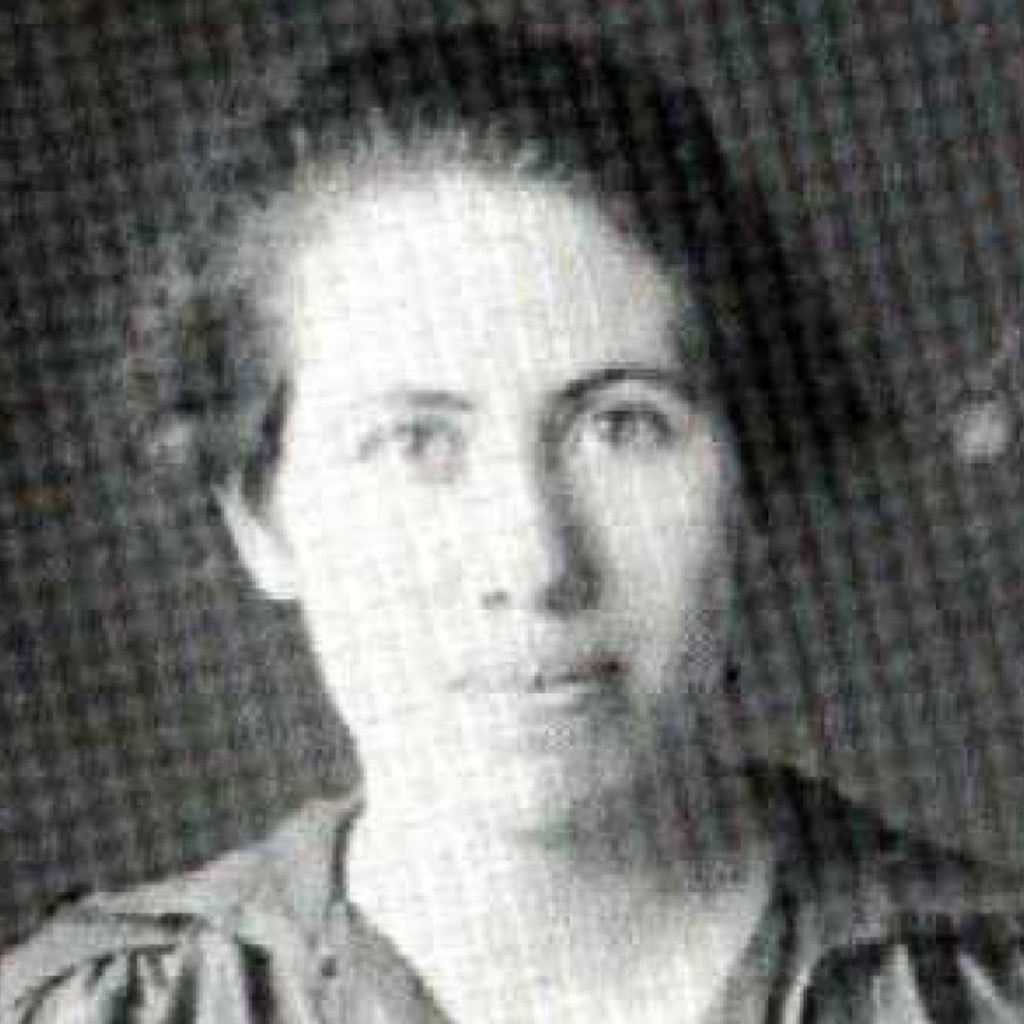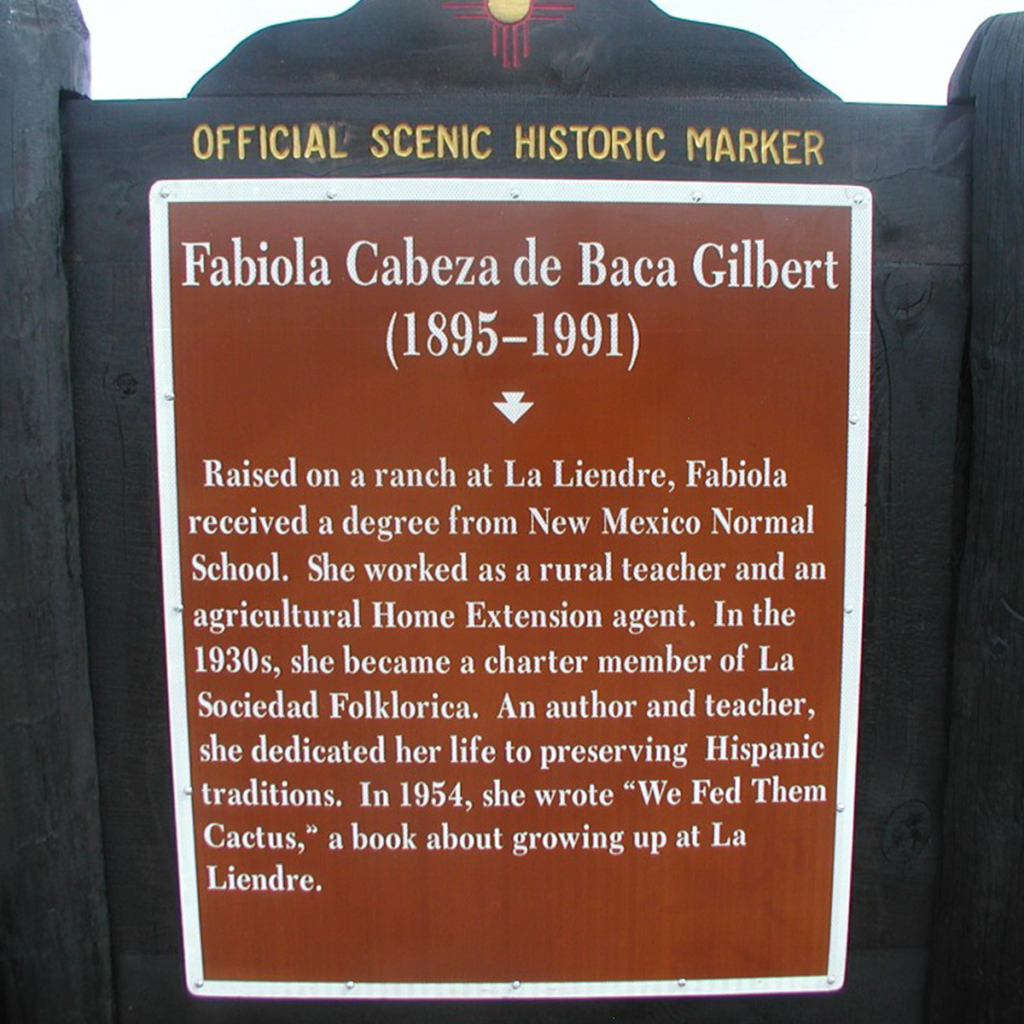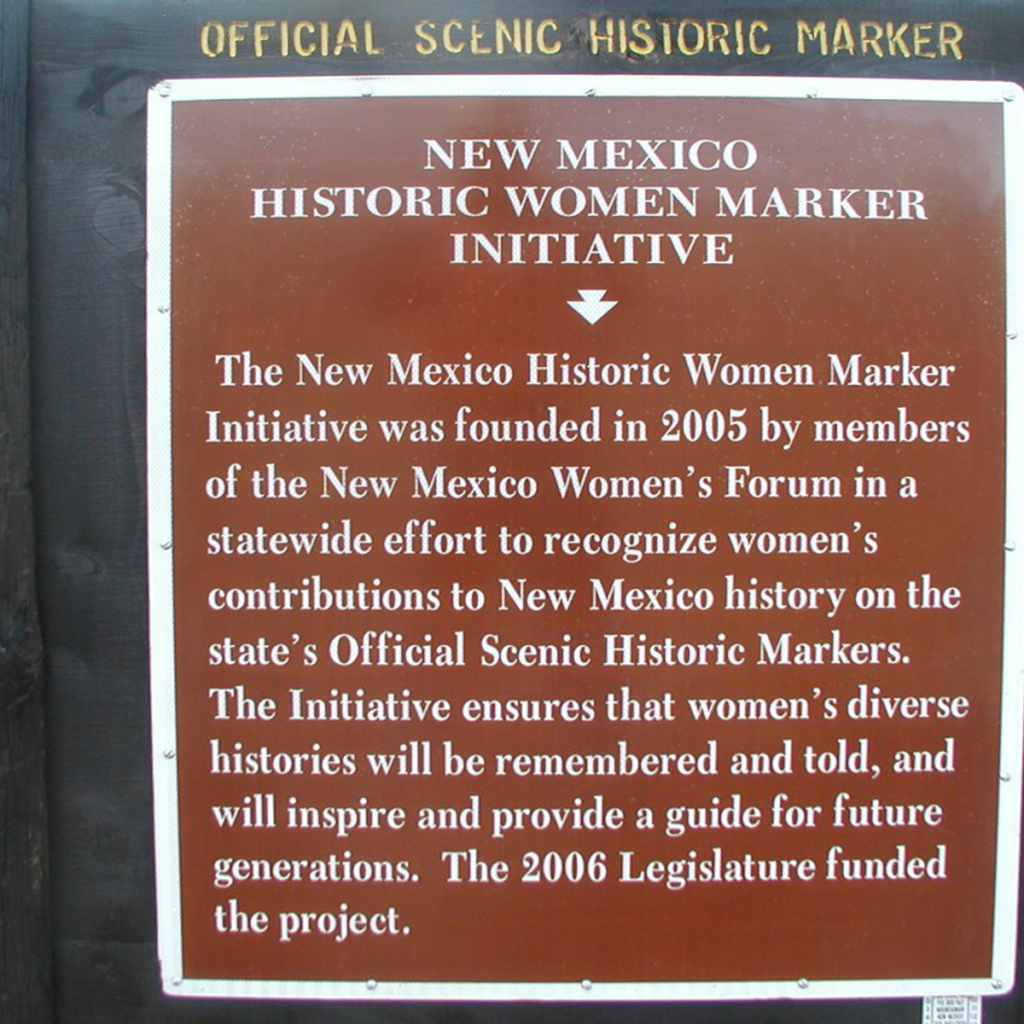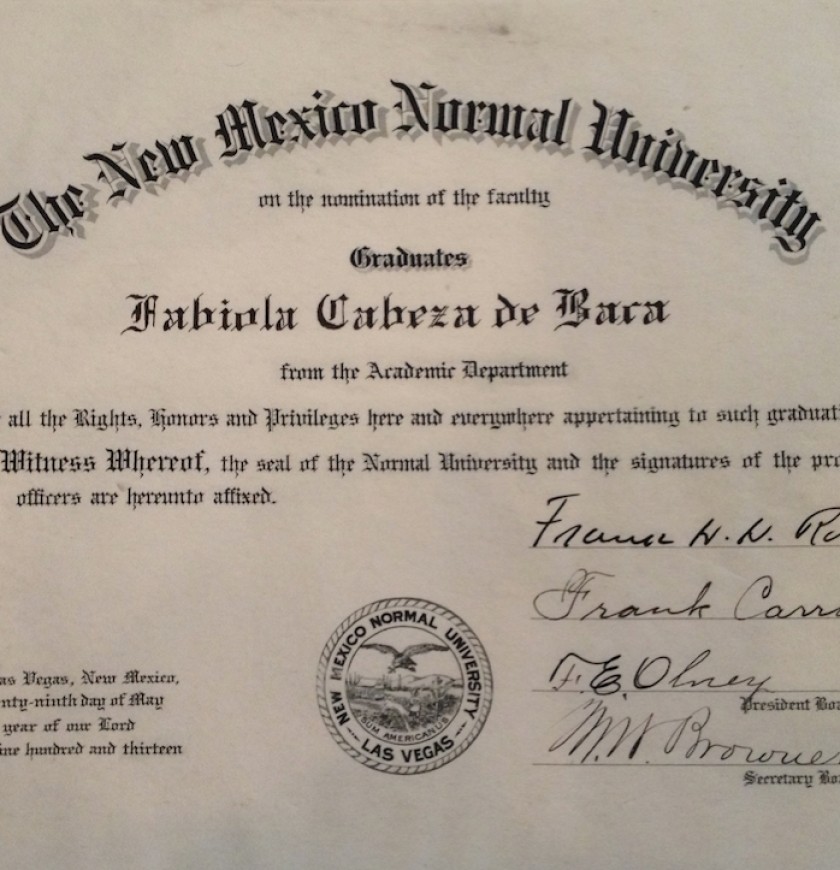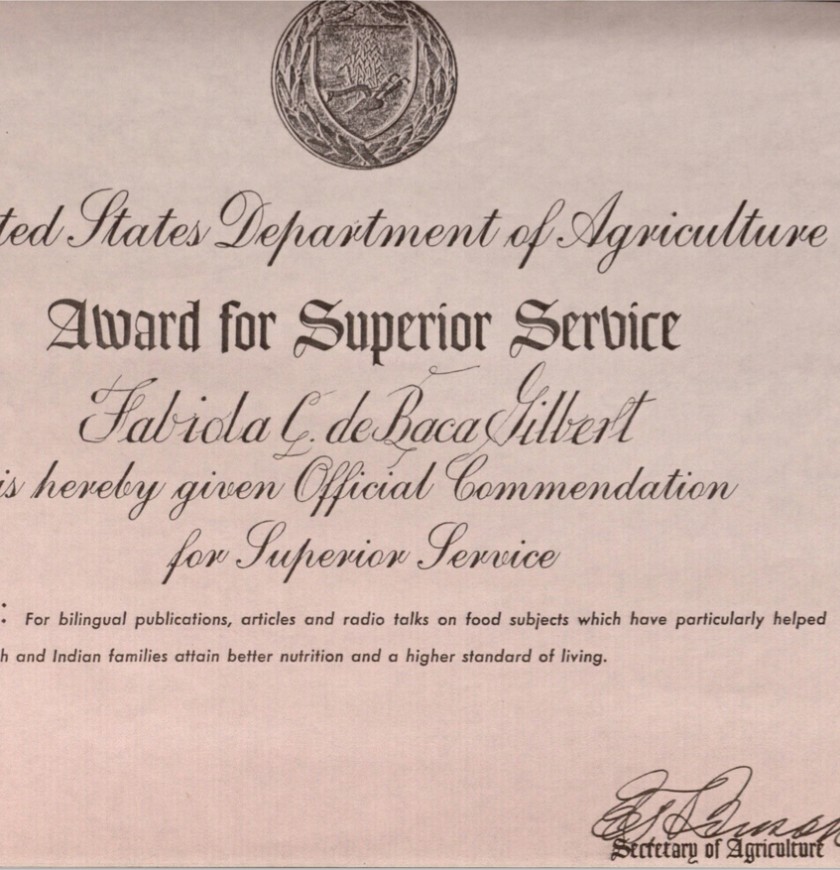New Mexico.
Fabiola Cabeza de Baca Gilbert
1894 - 1991
San Miguel County
A charter member of La Sociedad Folklorica in Santa Fe, she was committed to preserving hispanic cultural traditions, including dance, music, language, folklore, and costumes. Her traditional cooking became legendary and her three books on food preparation, history, and oral traditions are valuable resources for historians.
Fabiola Cabeza de Baca Gilbert had the rare experience of living in two centuries, over a lifetime that spanned nearly the entire 20th century. Particularly as a Hispanic New Mexican woman, her place in time helped position her to achieve and experience many seminal benchmarks. An author and teacher, she dedicated her life to preserving Hispanic traditions. Today, Cabeza de Baca is most remembered for her efforts to record, teach, and share the traditional lifestyles of northern New Mexico.
Born on May 16, 1894, on a ranch outside of Las Vegas, New Mexico, she was raised by her grandmother and father after her mother’s death when Fabiola was four years old. From her upbringing, she learned a sense of pride in her roots and history and acquired a lifelong curiosity about historic lifestyles in a century when technology was having a profound influence on everyday life. When she died in 1991 at nearly 100 years old, she had experienced tremendous change, living through the transition from horse and buggy to automobiles, jets, and space travel, and the widespread availability of indoor plumbing, centralized heating, computers, and much more.
She received her early education from the Sisters of Loretto Boarding School in Las Vegas, and went on to earn a degree from New Mexico Normal School (now New Mexico Highlands University) in pedagogy, and a Bachelor of Sciences degree from New Mexico State University. For forty-two years, Cabeza de Baca worked for the Agricultural Extension Service and traveled throughout northern New Mexico teaching people nutrition, food preparation, and sewing. In her extensive travels, she also learned about local traditions and languages from the people she taught. In addition to her native Spanish, she spoke English, Tiwa, and Towa.
In the 1930s, she became a charter member of La Sociedad Folklorica in Santa Fe, with a mission to “collect, preserve and pass on the knowledge of the customs and traditions of … Spanish ancestors.” The Sociedad continues its mission today, teaching and sharing the history of traditional dance, music, language, folklore, and costumes. Inspired by Cabeza de Baca, many of the women in the organization were encouraged to share their own family stories, perform research, and, like her, write and publish books.
Her first book, Historic Cookery, published initially in 1931, collected traditional recipes, emphasizing “basic New Mexico foods.” Historic Cookery was one of the first Mexican American cookbooks that included recipes for chile sauce, masa, atole, panocha sprouted-wheat pudding, and menudo. The book sold more than 100,000 copies and was republished many times. Governor Thomas Mabry sent a copy of Historic Cookery to all of his fellow governors, along with a bag of pinto beans. Cabeza de Baca’s second cookbook, The Good Life: New Mexico Traditions and Foods, first published in 1949, was one of the first cookbooks to “place recipes within the historic and cultural contexts out of which they grew.”
In 1950, the United Nations sent Cabeza de Baca to Mexico to train other agricultural extension agents from throughout Central and South America. She also worked with the Tarascan Indians to set up demonstration centers. Her education and lifelong experiences among rural ethnic groups, her family’s interest and respect for traditional culture, and the rapid changes occurring around her all contributed to her evolution as a vocal advocate for historic preservation.
Her autobiographical book about growing up at La Liendre, We Fed Them Cactus, was published in 1954, and between 1958 and 1961, Cabeza de Baca wrote and edited for a magazine she helped found, the Santa Fe Scene.
Despite personal disappointments–a ten-year marriage that ended in divorce, the loss of her leg in an accident–Cabeza de Baca was known for her indomitable spirit. Her traditional cooking became legendary and her three books on traditional food preparation, history, and oral traditions gleaned from her many years of inquiry, provide unique and fascinating insights into New Mexico’s past.
Sources:
Fabiola Cabeza de Baca Gilbert. We Fed Them Cactus; The Good Life; Historic Cookery.
Davis, Kate K. "Fabiola Cabeza de Baca Gilbert (1894-1991)" in Champion,
Laurie (ed.), American Women Writers, 1900-1945: A Bio-Bibliographical Critical Sourcebook, by Laurie Champion (Ed.), Westport, CT: Greenwood Press, 2000.
UNM Center for SW research, unpublished papers, MSS 603 BL Box 1 Dr. Buchanan, Multicultural Library Services and Sources, Fall 1996.
Adelina Ortiz de Hill. “My Memories of Fabiola C de Baca Gilbert.” Rancho Pancho. http://rancho.pancho.pagesperso-orange.fr/Fabiola.htm
Rudnick, Lois. "La Fabulosa Fabiola: First Lady of New Mexico Cuisine (PDF)." El Palacio magazine, 2012, Retrieved 23 January 2017.
Dreilinger, Danielle. The Secret History of Home Economics. New York: W. W. Norton & Company, Inc., 2021
Directions:
Fabiola Cabeza de Baca Gilbert
San Miguel County
Community leader | Cultural preservationist | Educator |
Statehood (1912 - present) | Territorial Period (1848 - 1912) |
Northeast



